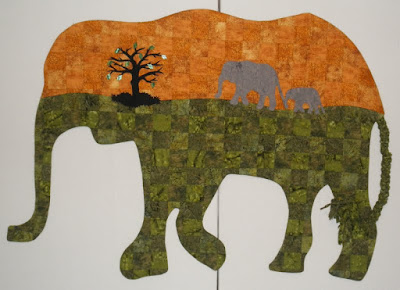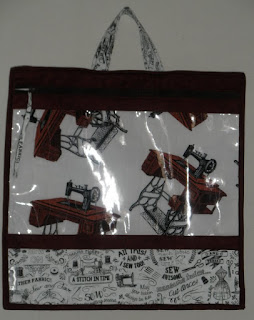Treadle On, my people powered sewing machine group, is having a fun block exchange. I am the hostess of this exchange. This blog post includes all the info about the exchange.
Who likes Chocolate??? Who likes chocolate mixed with other, yummy flavors??? Who likes fabric??? Who has a people powered sewing machine (treadle or hand crank)??? I can answer 'YES' to all of those questions.
This block exchange makes 9 1/2" unfinished 9 patch blocks (3.5" squares, with the 'chocolate' color on the 4 outside corners and the middle block).
Use colors of chocolate (milk to dark chocolate) and add in other colors that are in different chocolate candies (mint, raspberry, peanut butter, caramel, strawberry, almonds, etc). (Any other 'flavors' you come up with???)
Number of Blocks in a set: 8
Max. number of sets: 4
Here are the 'flavors' that I chose to use.
Since these blocks are 9 1/2 inches, your squares need to be 3 1/2 inches. I chose to cut strips and string piece my blocks. It's more accurate and much quicker.
From you 'chocolate' fabric, cut 5 strips, 3.5" wide, by width of fabric.
From your 'candy' fabric, cut 5 strips, 3.5" wide, by width of fabric. Set one of these strips aside for now.
Stitch 2 sets of 'chocolate', 'candy', 'chocolate' fabrics together.
Stitch 1 set of 'candy', 'chocolate', 'candy' fabrics together.
Carefully cut each of these sets into 9.5" x 3.5" sections. The photo below shows mine cut, and sitting next to each other, in sewing order.
Stitch these units together to make your 9 patch block. Here is my finished 9 patch block.
Using this method, you end up with 11 blocks. 8 blocks for the exchange, and 3 bonus blocks for you.
Now, take your extra 'candy' strip of fabric, and cut it into 3.5" squares. These are your 'signature' squares. Sign them (with a Pigma or Micron pen) with all the proper info (your name, location, what machine used, 2018 Chocolate TOBE).
Attach your signature square to the back of your block.
I just basted my signature square to the back of my block, with a 'loop' of thread.
The signature squares can be added to the back of your quilt, so that you will know, by matching the fabrics, who made each block in your quilt.
Mail by dates: International, May 6, 2018, USA, May 12, 2018
Now that you have all the info, who wants to join this block exchange? Go to Treadle On, and join the group, and get the rest of the info for block exchanges.
I have one set made, and 3 more sets cut out.
Who likes Chocolate??? Who likes chocolate mixed with other, yummy flavors??? Who likes fabric??? Who has a people powered sewing machine (treadle or hand crank)??? I can answer 'YES' to all of those questions.
This block exchange makes 9 1/2" unfinished 9 patch blocks (3.5" squares, with the 'chocolate' color on the 4 outside corners and the middle block).
Use colors of chocolate (milk to dark chocolate) and add in other colors that are in different chocolate candies (mint, raspberry, peanut butter, caramel, strawberry, almonds, etc). (Any other 'flavors' you come up with???)
Number of Blocks in a set: 8
Max. number of sets: 4
Here are the 'flavors' that I chose to use.
Since these blocks are 9 1/2 inches, your squares need to be 3 1/2 inches. I chose to cut strips and string piece my blocks. It's more accurate and much quicker.
From you 'chocolate' fabric, cut 5 strips, 3.5" wide, by width of fabric.
From your 'candy' fabric, cut 5 strips, 3.5" wide, by width of fabric. Set one of these strips aside for now.
Stitch 2 sets of 'chocolate', 'candy', 'chocolate' fabrics together.
Stitch 1 set of 'candy', 'chocolate', 'candy' fabrics together.
Carefully cut each of these sets into 9.5" x 3.5" sections. The photo below shows mine cut, and sitting next to each other, in sewing order.
 |
 |
| finished block |
Now, take your extra 'candy' strip of fabric, and cut it into 3.5" squares. These are your 'signature' squares. Sign them (with a Pigma or Micron pen) with all the proper info (your name, location, what machine used, 2018 Chocolate TOBE).
 |
| one of my signed squares |
 |
| signature square attached to back of block |
 |
| square basted to block |
Mail by dates: International, May 6, 2018, USA, May 12, 2018
Now that you have all the info, who wants to join this block exchange? Go to Treadle On, and join the group, and get the rest of the info for block exchanges.
I have one set made, and 3 more sets cut out.






































































































